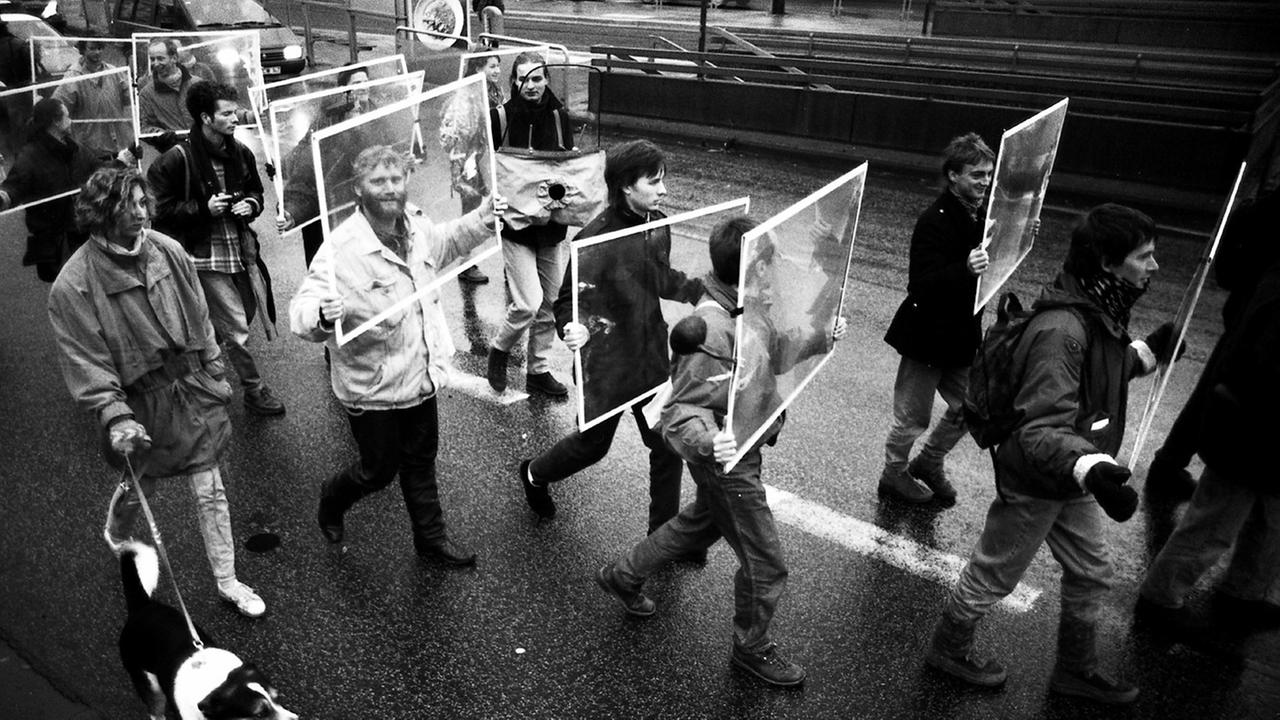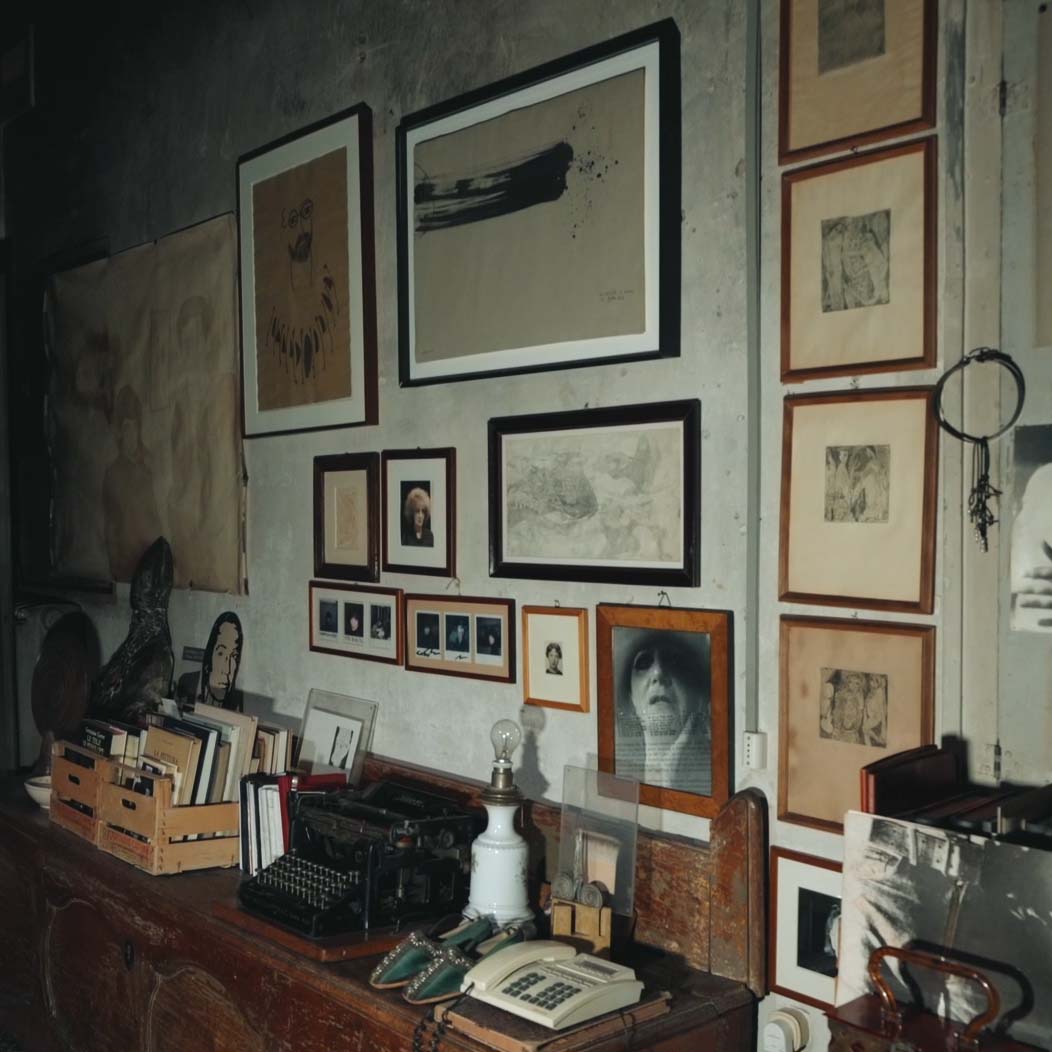Hiking, walking, strolling: Why we walk and what motion on two legs means for human beings is a recurring theme in books. We present five of them.
“I never want to go for a walk again”, cried many after the end of the first lockdown in spring 2020 – and then a couple of months later they would once again be doing the rounds of the neighborhood to at least get a bit of exercise during the second compulsory ensconcement. Some, who are against the Federal Government’s pandemic measures, have been meeting up for “walks” that not infrequently end in violent riots. Never before has locomotion on foot been so political, you might think – but you’d be mistaken.
Walking as a sign of poverty
“The history of walking is an unwritten, secret history whose fragments can be found in a thousand unemphatic passages in books, as well as in songs, streets, and almost everyone’s adventures. […] Like eating or breathing, it can be invested with wildly different cultural meanings, from the erotic to the spiritual, from the revolutionary to the artistic,” writes Rebecca Solnit in “Wanderlust. A History of Walking”. Her comprehensive cultural-historical treatise, which was published in 2000, was translated into German for the first time in 2019. In it, the journalist covers a wide range of material, starting with theories on the emergence of the upright gait and spanning medieval pilgrimages and the walks through nature taken by Romantic poets, as well as contemporary mass demonstrations.
What becomes clear here is that although our early human ancestors began walking on two feet several million years ago, for many centuries walking itself was considered a sign of poverty: Any self-respecting person with the means to do so would use a carriage to get from A to B. It was only in the late 18th century, during the age of Romanticism, that intellectuals began walking solely for pleasure and to consciously spend time in nature, a seminal change that Solnit illustrates using the example of the poet William Wordsworth. With the rapid growth of cities during industrialization, during the late 19th century there also emerged the concept of the flaneur: With a hat and cane and with no fixed destination, he would stroll along the streets and even became the foundation for his own literary genre – Charles Baudelaire, Walter Benjamin, or Franz Hessel come to mind as examples here. It is a list that, with the few exceptions of figures like George Sand and Virginia Woolf, is composed entirely of men. Why were so few women out and about, Solnit asks.

image via deutschlandfunkkultur.de

Portrait Rebecca Solnit, image via ipg-journal.de
Feminist psychogeography
It’s a question the author of the feminist anthology “Flexen. Flâneusen* schreiben Städte” also poses. “What I do is not simply a nice walk around, a pleasure stroll, a matter of course. I am not yet part of a tradition, there is still no picture of me with a walking cane and top hat on the grand boulevards, no literary history. When I move around cities, it means: Watch out.” The book contains various literary-critical approaches to walking through urban spaces and the insecurities associated with it for women or queer people. It is an attempt to give them a voice; to help them conquer the city for themselves step by step and to overwrite it with their own perceptions.
The fact that, elsewhere in the world, it is not as easy as in the world of Central European culture is demonstrated by the reportage here by Julia Lauter: She accompanied Indian women in Mumbai who meet for longer walks, primarily at night, a time when public places in India are dominated exclusively by men. It is a form of protest and rebellion against a palpable oppression in the urban space, based solely on the fact that a person is female. And indeed, given the rapes and murders of Indian women also covered by the local media, it is still associated with the utmost risk.
When I move around cities, it means: Watch out

Özlem Özgül Dündar, Mia Göhring and Lea Sauer, Photo: Janis Nittritz, image via fluctoplasma.com
“Reading in the text of the city”
Another publication, not exclusively related to the role of women but likewise exploring the meaning of walking within urban spaces, is “Psychogeographie” by Anneke Lubkowitz, which revolves around “the image of walking as reading in the text of the city”. This is also an anthology with a mixture of theoretical and poetic texts, including examples from literary walkers Will Self and David Wagner, who indulge in observations and associations on their rambles, or from the professor of “Walking Studies”, Lucius Burckhardt, who worked with students to stage actionist interventions drawing attention to the amount of space cars actually take up in the public space.
Of course, it wouldn’t be complete without the expertise of Guy Debord, the founder of the “Situationist International” which emerged in Paris in the 1950s. It was he who coined the titular term “psychogeography”, behind which lies the question of what influence the architecture of a city has on our emotional behavior when we move through it along familiar and unfamiliar paths. Debord urges people to playfully detach themselves from routine, everyday actions by “wandering around” and to abandon themselves to encounters in the terrain.

Lucius Burckhardt, Drivers Walk, Photo: Bertram Weisshaar, image via deutschlandfunk.de

Guy Debord, Title page of the "Psychogeographical Guide to Paris". The territory is fragmented and shows only the emotional connections of the different places, image via researchgate.net
One step at a time
It’s a practice Erling Kagge would no doubt endorse. He, too, is a passionate walker; sometimes he sets an end point for the process and sometimes he simply sets out on foot. Like Rebecca Solnit, who speculated “that the mind, like the feet, works at about three miles an hour”, and that it therefore – in the truest sense – can barely keep up with the speed of modern life, Kagge is also convinced: “So much in our lives is fast-paced. Walking is a slow undertaking and among the most radical things you can do.”
In his text “Walking. One Step at a Time”, he interweaves personal experiences of long walks to the North Pole and short strolls through the surrounding area with philosophical elements and various scientific theories. Like many writers who explore bipedality at the meta-level, he also reports on the increasing fusion of body and environment: “The longer I walk, the less I differentiate between my body, my mind, and my surroundings. The external and the internal worlds overlap. I am no longer an observer looking at nature, but the entirety of my body is involved.”

Erling Kagge in 1992 on skis and sled on the way to the South Pole, Photo: dpa Picture Alliance image via travelbook.de
Wild and poetic
Tomas Espedal takes this transcendental self-awareness one step further. His book, “Tramp, or, the Art of Living a Wild and Poetic Life”, categorized as a novel, describes a man who one day leaves his wife, child, and home to head out into the great beyond – and in doing so, to find himself. This first-person narrator wanders the world in keeping with the classic image of the “lonesome traveler”, who drinks himself into oblivion in bars, sleeps outdoors, and carries only the bare necessities.
But along with alcohol, walking also gives him a rush that quickly becomes addictive: “There is a point, a stage, at which walking has noticeably crossed a boundary; I no longer feel like stopping, I just want to keep going, going, going, it no longer matters where and why, in which direction, walking has become second nature to me, it is a rush, a freedom rush [...].”The “runners’ high” that enables long-distance runners to forget all the efforts and never stop seems to be able to take effect even at a walking pace. But you must beware, the narrator cautions: “you might go so far that it could be difficult to go back to what is normal, to what used to be, a job, a home?”
Solnit, Kagge, and Espedal all approach walking from different angles; they detach it from the notion of banal forward motion and consider it from a cultural-historical, philosophical, and scientific point of view. Anyone who engages with their texts will likewise find themselves walking – even while they sit at home on the sofa.
There is a stage, at which walking has noticeably crossed a boundary; I no longer feel like stopping, I just want to keep going, going, going

image via matthes-seitz-berlin.de









